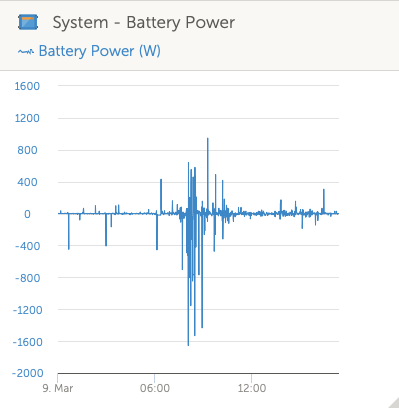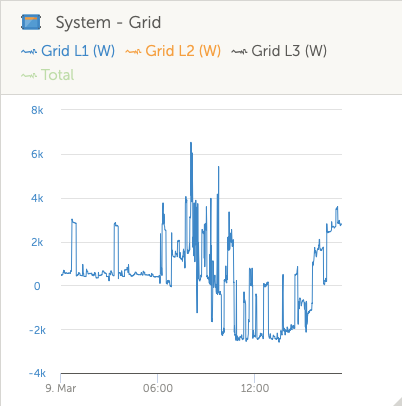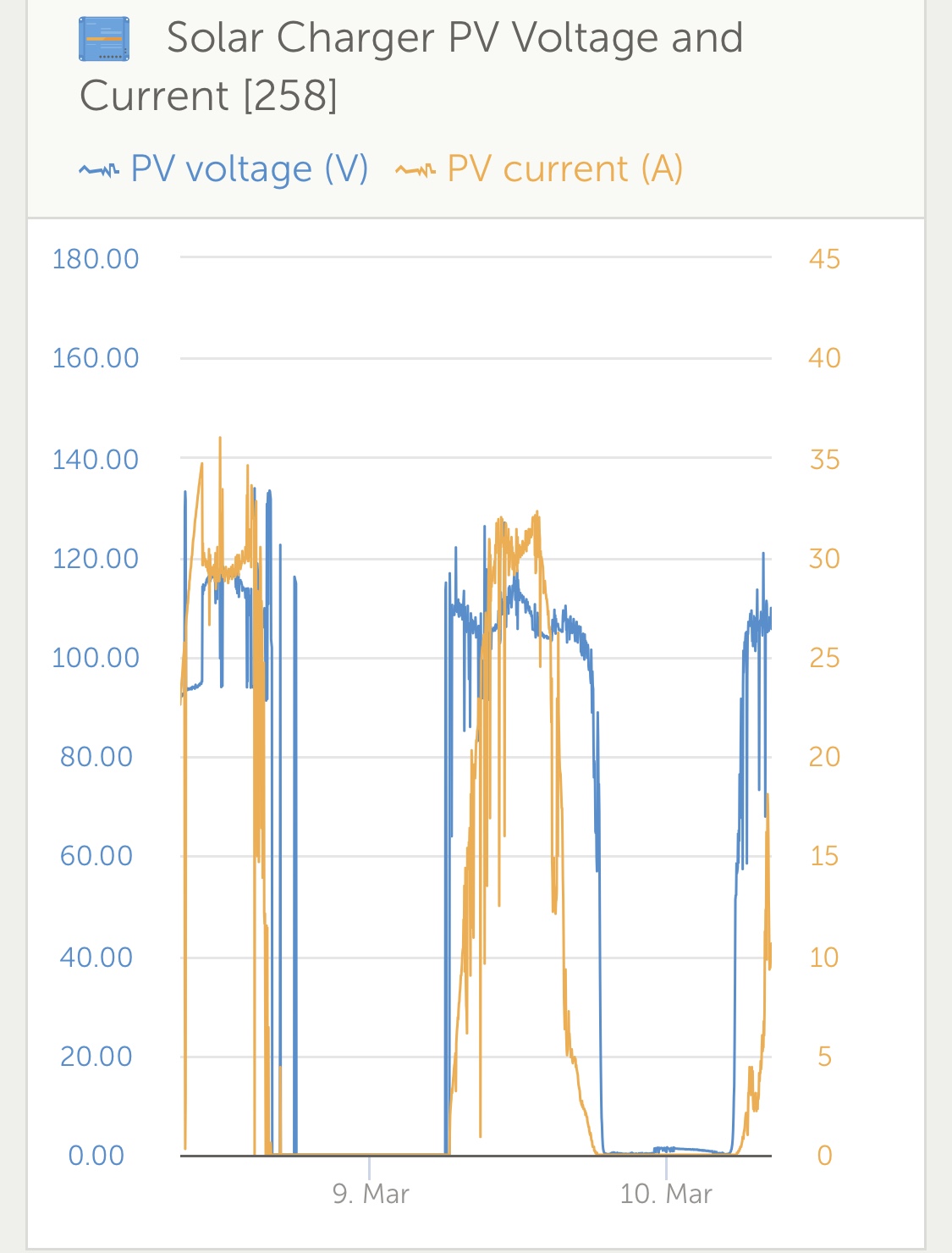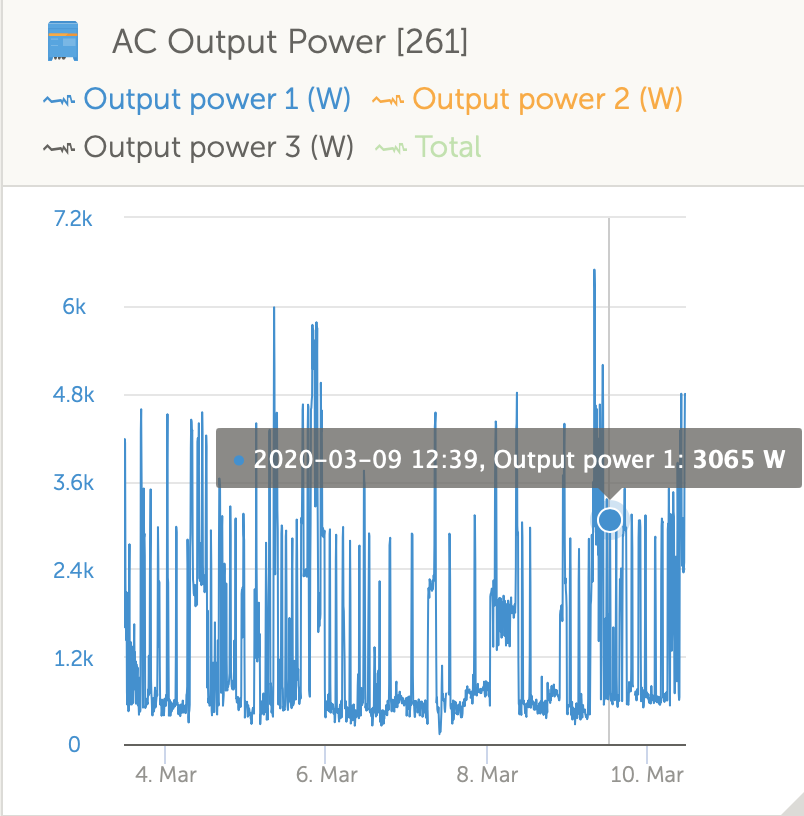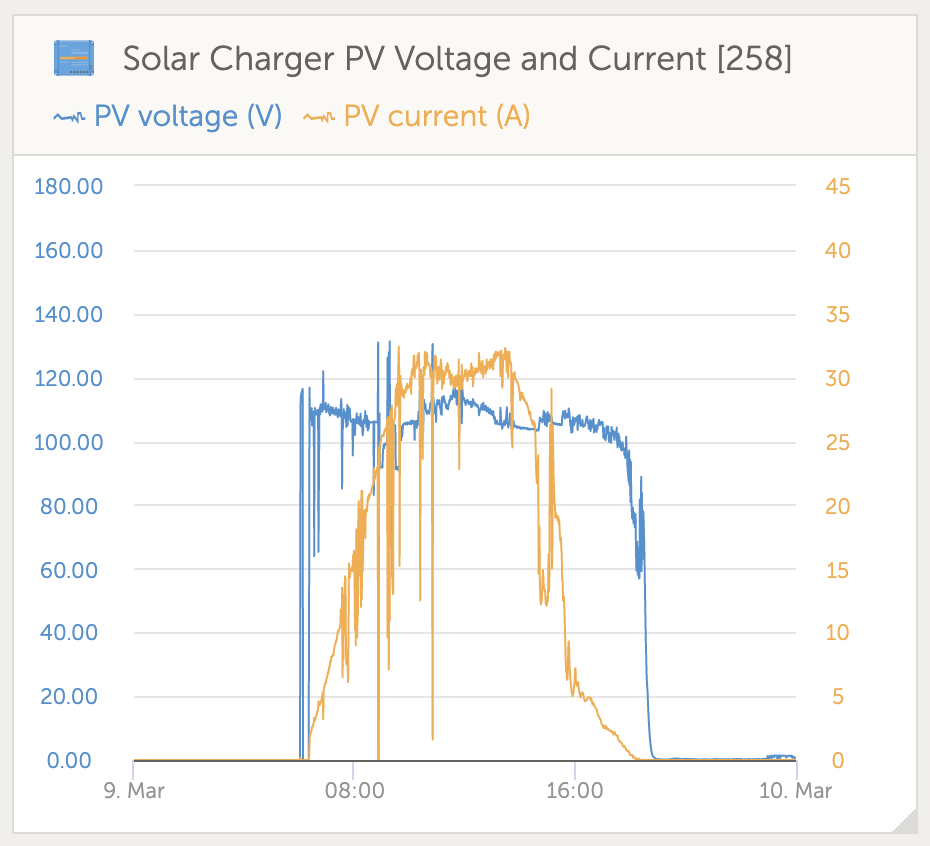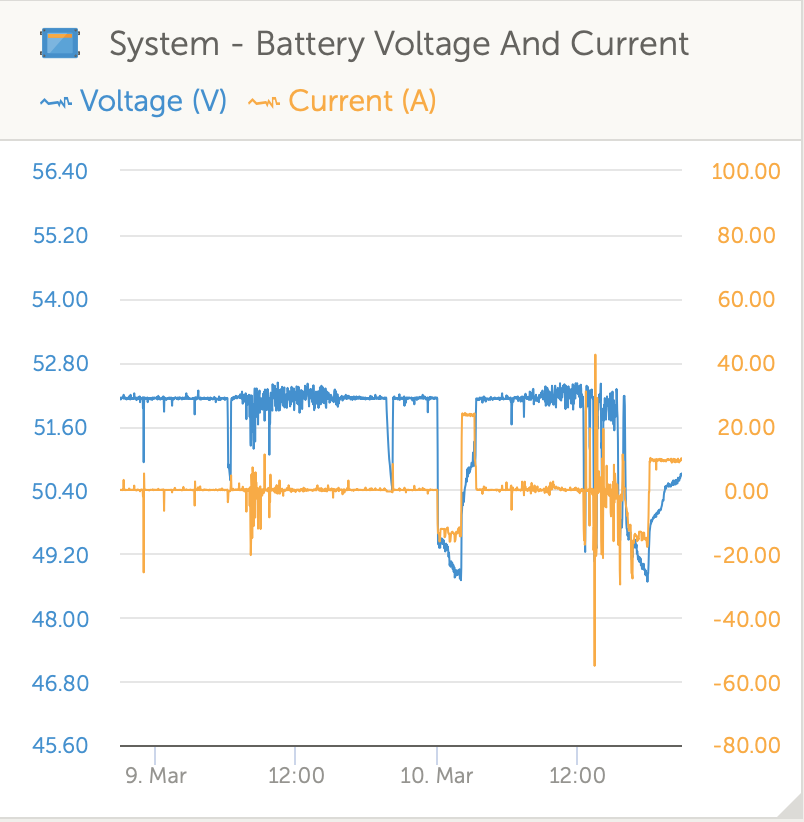Hello community,
I need some help please!
I have just installed my system:
1 x Multiplus 48/5000
1 x SmartSolar MPPT 15/70-TR
1 x Venus GX
1 x PylonTech US2000B 2.4kw
12 x 350w Canadian Solar
ESS is installed in 'Keep Batteries Charged'
DVCC -ON
My PV is peaking out at about 3350W. It seems that something is throttling the system.
I have followed the setup recommendation for the Victron/Pylontech setup.
System has been running for 2 days. When I first set up it would not work on ESS 'Optimised without Battery Life'. PV was on and then off, on and then off. I then setup as 'Keep Batteries Charged' and PV worked fine. End of the day, still on 'Keep Batteries Charged' the system went crazy again with PV on, off, on off, on off. I looked closer and it seems liked the 'State' on the MPPT was ESS/Fault.
I then reset as much as I could and everything started working again today. My PV is still peaking out at about 3350W.
Surely I should be getting at least 3800w out of the max 4200w? Is there anything I am missing?
Does this have anything to do with the jumpers on the underside of the MPPT? (untouched out of the box)
Unloaded my voltage is 130v on both strings of PV. Loaded it drops between 94v and 107v
Any help will be much appreciated.
